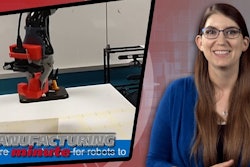Neural networks have been around for six to seven decades, so in some ways they lack a certain “What’s new about that?” value. But as deep learning goes, the computer system modeled on the human brain and nervous system holds great promise for manufacturing.
The McKinsey Global Institute recently published a discussion paper of more than 400 use cases for artificial intelligence. What we found is that AI deep learning through specific neural networks can be used to significant benefit in manufacturing.
It’s the Learning That Matters
Deep learning empowers better forecasting and better integration of relevant data. Production and demand forecasting improve dramatically by neural networks when added to more traditional analytical methods such as regression and classification techniques. This was true for 69 percent of all AI use cases we identified in our study. In fact, in only 16 percent of use cases did we find a “greenfield” AI solution that applied where other analytical methods would not be sufficient or relevant.
We looked at three specific neural networks:
- Feed Forward. Information moves from the input layer forward through the “hidden” layers to the output layer, enhanced by advances in computer power, training algorithms, and available data.
- Recurrent. Connections between neurons include loops suited to processing input sequences, such as handwriting, texts and speech recognition, including lip reading.
- Convolutional. Connections between neural layers mimic the visual human cortex that processes images. These are suited to visual perception tasks.
These enable integration of whole new sets of data, such as images, videos, and voice.
Social Media and Demand Forecasting
The additional data we were able to incorporate included competitive information, such as social media data, which opens up a whole new way of thinking in real time. When images of your products are showing up on social media, you are seeing real-life applications in real time, and it is tangible. There is a whole set of variables that we don’t traditionally think of as being included in demand forecasting, but they deepen what we learn.
In our study, manufacturing accounted for 42 of the specific use cases. Operations more broadly totaled more than 100 when considering areas manufacturing touches, such as supply chain and product development. Our study shows AI applied to advanced manufacturing and supply chain could create $1.2 trillion to $2 trillion in annual economic value.
We are also starting to see real life applications across industries. At a consumer goods client, the use of neural networks enabled introduction of a whole set of new variables to improve demand forecasting—from 7 variables they keep track of daily to 27. End result was a significant enhancement in forecast accuracy, from 76 percent to 95 percent in a matter of few months.
Another example was raising energy efficiency at an agricultural processing company with a single plant. The firm used a variety of energy inputs—high- and low-pressure steam, natural gas and electricity; in fact, energy amounted to one-third of their total cost. It was easy to overlook energy use without a methodology to optimize it, and that led to a lot of waste. They didn’t know what they didn’t know. We used neural networks to optimize steam, natural gas, and electricity use for the entire complex dependent on production levels and other site targets. This resulted in 27 percent reduction in energy usage.
The learning nature of algorithms accomplished this gain. These are great for areas that aren’t the primary concern of manufacturers. We’ve seen similar results in pharmaceuticals, chemicals, and other industries.
Culture Matters, Too
The case studies are helpful to see the potential of AI. But the value is not in the models themselves but in the ability of organizations to harness them. Deep learning transformation is as much about culture change and being open to new tools for leveraging big data as it is about the technical side of making it happen.
It is unsurprising that high-tech industries lead in these areas. But we see significant adoption in financial services. Manufacturing has the second-greatest potential for a gain of the 19 industries and nine business functions in our study.
A lot of this depends on data infrastructure. But culture is critical. How open are business operators to these kinds of tools and more data-oriented decision making?
Given the declining cost of setting up AI applications, small-to-medium-size manufacturers can do a lot as well. On the hardware side, sensors and actuators have become affordable and reliable. On the software side, both data systems and deep learning algorithms have become widely accessible. Small-to medium-size players can develop solutions internally or work with technology providers in the market.
The core components of deep learning are a competitive advantage going forward, and you will see competition across industries. Who has the best algorithms? Who can use sensors and other forms of data collection to the best advantage? These are key questions, and they can keep you and your business from falling behind.
Mehdi Miremadi is a Partner at McKinsey & Co.























